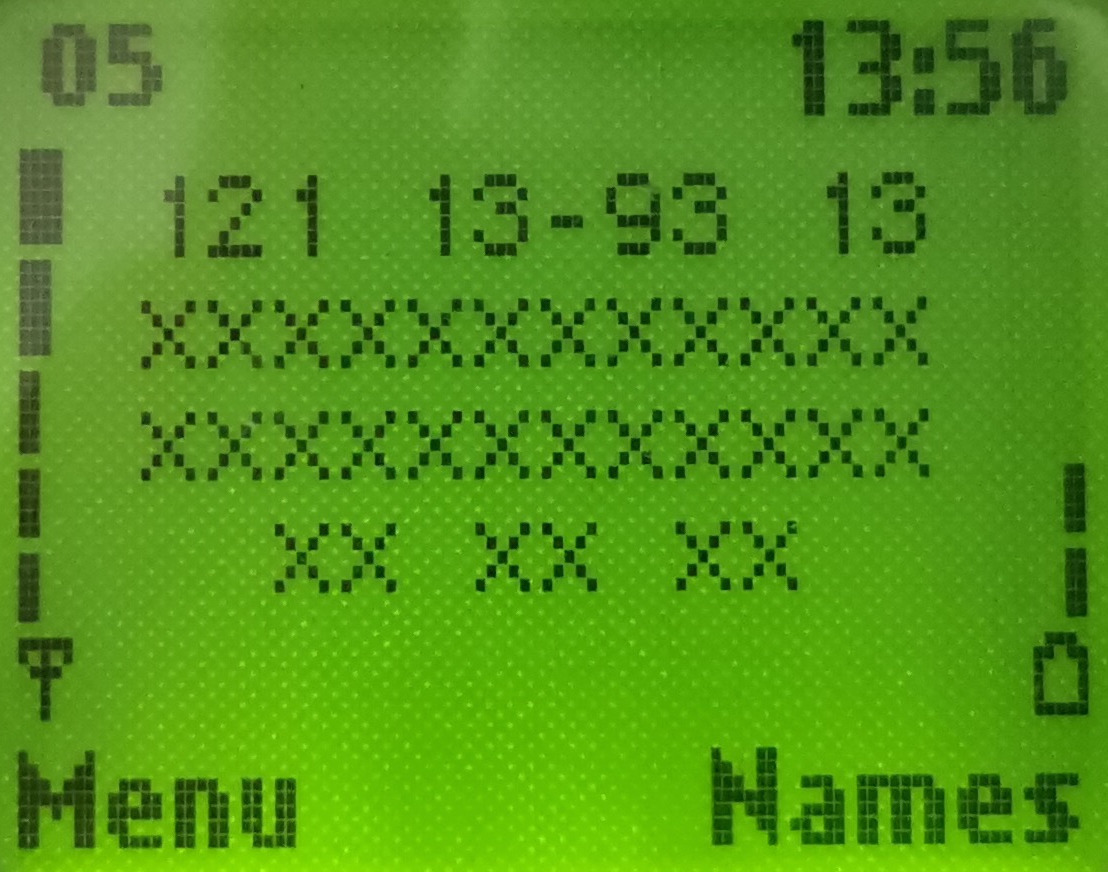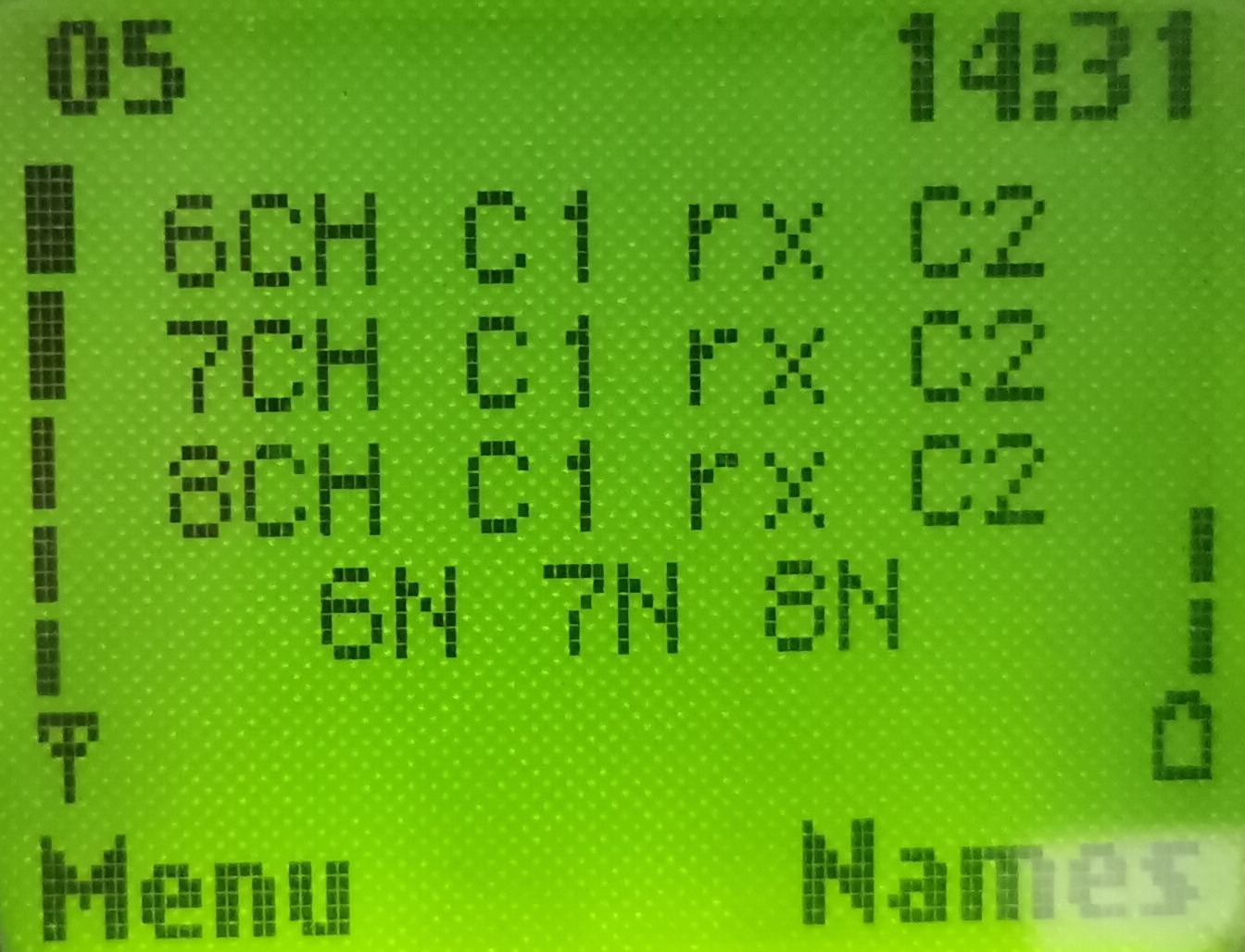Main page
News
Guest book
Home bs0dd.net
Phones
List of modelsFirmware
Net Monitor
FT/NM activationNet Monitor (DCT3)
Net Monitor (DCT4)
Soft and games
Java MIDletsOfficial soft
Soft for 5510
PC software
Connectivity
Data-CablesFLOSYS FBUS/MBUS docs
DLR-3 MBUS (atrox)
Modding
Color display (6310)WAP
WAP-gatewayWAP-page
Other
Nokia 9210 archiveElektronika MK
Kannel for Windows
Nokia Net Monitor description (DCT3)
MAIN PAGE
< PREVIOUS PAGE
NEXT PAGE >
Test 05 – Selection characteristics of Neighbour 6, 7 and 8
Available in: 2100, 3330, 5110, 6150, 6210, 7110, 8210, 8250
This test displays a selection summary of the neighbour cells.
| Test screen | Help screen |
 |
 |
xCH: The radio channel number (ARFCN) of the cells. This will be submitted in the measurement report. See “Test 1 – Serving Cell Information (1)”. [GSM 05.05:2.x]
C1: The C1 value of the cell in idle mode. See “Test 1 – Serving Cell Information (1)”. [GSM 05.08:6.4] In dedicated mode, the BSIC value used to distinguish between multiple cells using the same channel is shown, in the form of a 2-digit value from 0-63 preceded by a ‘B’ (this will be submitted in the measurement report). See “Test 2 – Serving Cell Information (2)”. [GSM 03.03:A.1, 05.08:7.2]
rx: The received signal strength of the cell. This value is in dBm, but if the value is -100dBm or less, in order to fit the 3 digits, the ‘-’ sign is not shown. In dedicated mode, this value will be used to calculate the RXLEV submitted in the measurement report. [GSM 05.08:8.1]
C2: The C2 value of the cell in idle mode. See “Test 1 – Serving Cell Information (1)”. If C2 values are not supported (see “Test 07 – Current Cell Flags”), the C1 value is displayed. Even if C2 values are supported, the C2 on many cells will equal the C1 value. In dedicated mode (i.e. call), the information here is meaningless (in particular for neighbour cells, since the MS may not have received the cell reselection criteria to calculate the C1/C2 values). [GSM 05.08:6.4]
6 / 7 / 8: This indicates whether neighbour cells is in a forbidden location. It displays ‘F’ if it is, otherwise it displays nothing.
N: This indicates the selection priority of the neighbour cell. Can be ‘N’ (normal), ‘L’ (low), ‘B’ (barred). See below. [GSM 05.08:9.table1a, 03.22:3.5.1, 3.5.2]
Please note the neighbour cells lines may not be displayed, if there are no neighbours found to be measured, or the BTS Test (“Test 17 – BTS Test”) is enabled. Any line not displayed is shown as ‘x’s, including it’s corresponding priority and forbidden indicator. The first line (serving cell) will always be displayed, if there is no coverage on the home network, it will show information about another network. If there are no networks found, it will show the last stored values from when a network was found.
These tests (3-5) are useful for seeing the number of cells detected in the area, as well as the contents of the measurement report in dedicated mode. The measurement report is sent by the MS to the network in order for the network to make decisions for handover. To find out more information about a cell, “Test 17 – BTS Test” can be used to lock the phone to it’s channel.
With the priority indicator, normal cells are compared first, followed by low priority cells if a suitable normal cell cannot be found. Barred cells are cells which the network operator does not want phones to camp on – it might be a cell currently being tested, or for other reasons. It is possible however to use barred cells with Net Monitor, with “Test 19 – Change Behaviour for Barred Cells”. [GSM 05.08:9.table1a, 03.22:3.5.1,3.5.2]
[GSM 05.08:6.2, 6.3, 6.4, 6.6, 7.1, 7.2, 8.2, 8.4 03.22:3.x, 4.x]
Port: 9201
Powered by COMPPAG 0.50
2022-2024 © Compys S&N Systems